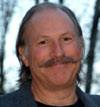It’s one of those rare events that reminds people Earth is a planet in space. The media gets on board, too: TV weathermen are sure to say “days and nights are equal today,” even though it’s never true. Astronomers know better, realizing that atmospheric refraction bends the solar disk upward by its own diameter, letting us see the Sun even after it has set. This alters the day-night mix, boosting the actual annual sunshine by 1½ percent. It’s demonstrated most clearly on the equinox, which has between 4 and 15 minutes more day than night. This solar excess is greatest farther from the equator, where Earth turns slower and where people spend more time in that “refracted Sun zone” alongside the terminator.
Days and nights are not even roughly equal at the poles. Researchers at the South Pole experience 24 hours of Sun on the equinox. No trace of night, no sign of equality. Just the Sun fully up, rolling leftward atop the horizon like a glowing bowling ball from a nuclear power plant. Long ago, experimenters grew sunflowers down there to see if they’d follow the Sun’s horizontal motion, and they did. The poor plants slowly twirled around and around until they strangled themselves.
Everywhere else, the equinox Sun rises due east and sets precisely in the west. It’s the best opportunity to find the cardinal compass points from your home, to orient yourself (originally, to know the direction east, toward the Orient).
Directions are a comfortable subject for backyard astronomers. We who live above the equator use the North Star as a sure-fire direction-finder, because Polaris hovers precisely due north with an accuracy of better than 1°. Advanced stargazers also know that Mintaka, the rightmost star of Orion’s “belt,” sets precisely due west, with an error of much less than 1°.
Campers and hikers instead use compasses, even though they’re more than 10° wrong in much of the world. Compasses screw up in other ways, too. Because magnetic field lines run parallel to Earth’s surface only in the tropics, in the Northern Hemisphere, a weight is added to the south pole of a compass needle in order to counteract magnetic dip — the north magnetic pole’s downward pull on the north side of the compass needle. This asymmetry introduces errors caused by the greater inertia due to the added weight. For example, if you are traveling east and you change speed, the compass needle will move counterclockwise during deceleration and clockwise in acceleration. And in an airplane’s banking turn, the compass weight moves down to the lower side of the plane, also causing an erroneous reading.
The stars never lie, and neither does the equinoctial Sun.
Less well known, the vernal equinox is the only day the Sun’s path is laser-straight across the sky. From April through August, a time-exposure photo reveals a highly curved solar arc that is concave toward the north. During the December half of the year, the Sun’s path curves the opposite way, mimicking a giant rainbow in the south. But now, on the equinox alone, the Sun moves straight across the sky.
For Americans, 2007 brings the first-ever vernal equinox in daylight-saving time. So the Sun’s highest elevation will occur around 1 P.M., not noon. At that moment, you’ll observe the Sun’s average yearly midday height for your location. It will climb 47 Sun-widths higher by late June, the same elevation it’s gained since the winter solstice.
This also will be our final March 21 equinox, reckoned by Universal Time (Greenwich Mean Time). Starting next year, spring will begin on the 19th or 20th for the rest of our lives. It’s all part of the 400-year calendar plan, in which a single century must endure unusually early equinoxes.
There’s more. The period surrounding the equinox brings the year’s most rapid increase of daylight. Daylight expands by 3 minutes daily in New York, 6 in Fairbanks. Twilight lengthens at its maximal rate, too.
This exploding sunlight brings countless consequences. For example, AM radio stations are heard for much greater distances at night, so, to limit interference, the FCC restricts many stations to daylight broadcasting only. Now, in March, the permitted period suddenly expands into the profitable prime-time evening hours.
So, the vernal equinox is much more than the start of spring. Ancient civilizations constructed Stonehenge-type pillars or passageways not simply because they had nothing better to do. They knew that this is when the planet seems to pause for an ephemeral moment, balanced and motionless, before rushing headlong into the year’s solar extremes.










